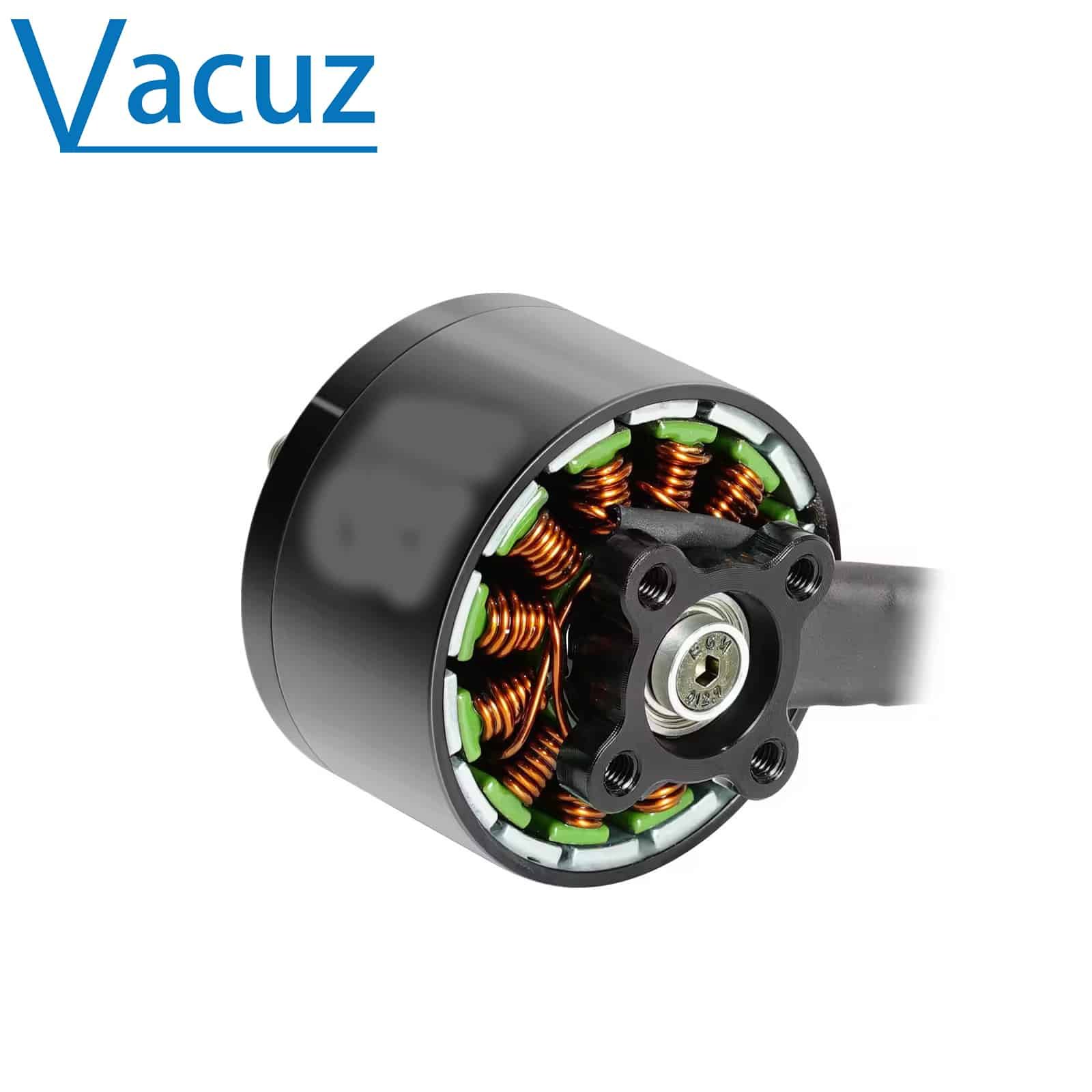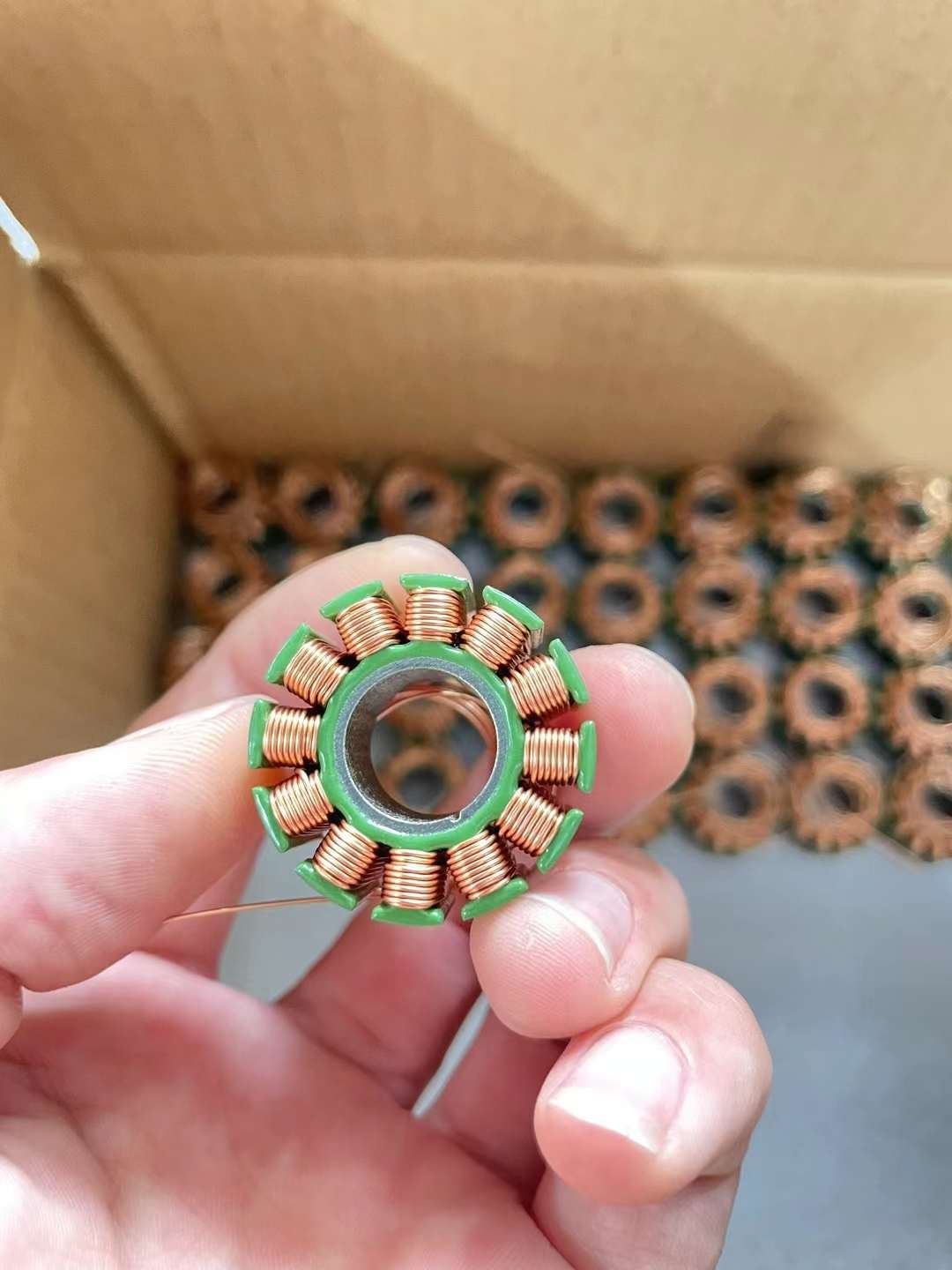When planning a UAV motor rotor assembly line to achieve multi-model compatibility, careful consideration of design standards and solutions is particularly critical. The following is Vacuz’s detailed explanation of several core elements of this complex process. I hope it can help everyone!

Vroče prodajo Vacuz 2806.5 2807 2808 2810 2812 3115 3110 3214 900KV 1115kV 1500KV 1300kv 5-8S Long Range Motor za FPV Multicopter za RC UAV Drone Brushless Motor
1. Core elements of design standards
1. The wisdom of modular design:
A modular design concept is adopted, and the assembly line is carefully broken down into multiple independent modules. Each module has its own function and is responsible for a specific assembly task. This design allows us to easily meet the assembly requirements of motor rotors of different models by simply replacing or adjusting the modules.
2. The bridge role of standardized interfaces:
To ensure seamless connection and efficient communication between different modules, we have developed a unified interface standard. This not only simplifies the assembly process, but also significantly improves production efficiency.
3. Forward-looking perspective on flexibility and scalability:
When designing the assembly line, we left plenty of room for flexibility and expansion. This means that we can easily add new modules or functions in the future, thus maintaining the long-term competitiveness and adaptability of the assembly line.
4. The cornerstone of high accuracy and high quality:
We are well aware that the high accuracy and quality of each module is the cornerstone to meet the assembly requirements of motor rotors of different models. Therefore, we are committed to ensuring that each module has excellent performance and stability to enhance the overall performance and flight stability of the drone.
2. Exquisite layout of the design plan
1. Intelligent application of automatic identification and adjustment system:
Introduce advanced automatic identification technology, such as RFID or QR code scanning, to accurately identify motor rotors of different models. Based on the recognition results, the system will automatically adjust the configuration and parameters of the assembly line to ensure that the assembly requirements of the current model are met.
2.Flexible and versatile configurable tools and fixtures:
Design tools and fixtures that can be quickly changed and adjusted to accommodate different models of motor rotors. This not only reduces downtime when changing models, but also significantly improves production efficiency.
3. Real-time protection of intelligent monitoring and feedback system:
Integrated intelligent monitoring and feedback system to monitor the operating status and assembly quality of the assembly line in real time. Through in-depth data analysis, potential problems can be discovered and corrected in a timely manner to ensure the stability and reliability of the assembly line.
4. Solid support of training and personnel support:
Comprehensive training and guidance are provided to operators so that they can master the assembly process and precautions of different models of motor rotors. At the same time, a dedicated technical support team has been set up to provide operators with real-time technical support and solutions.
3. Other considerations that cannot be ignored
1. Reasonableness of production line layout:
The production line layout is carefully planned to ensure smooth flow of materials, information and personnel. By optimizing the layout, we reduced waste and bottlenecks in the production process and improved overall production efficiency.
2. Strictness of quality control:
A strict quality control system has been established to ensure that each assembly step meets quality standards. At the same time, online testing equipment is introduced to monitor assembly quality in real time and detect and correct problems in a timely manner.
3. Regular execution of maintenance and care:
Develop regular maintenance and servicing plans to ensure long-term stable operation of the assembly line. In addition, spare parts are provided for key components so that they can be quickly replaced in the event of a failure.

Visoka moč Električni Bldc 2807 Stator in rotor Kompaktni Fpv Drone Motor 24v 1300kv Brushless Small Rc Motor za model letala
In summary, the multi-model compatible design of the UAV motor rotor assembly line is a complex and meticulous task. By adopting measures such as modular design, standardized interfaces, automatic recognition and adjustment systems, configurable tools and fixtures, and intelligent monitoring and feedback systems, we are able to achieve flexibility and scalability of assembly lines. At the same time, we also need to pay attention to issues such as production line layout, quality control, maintenance and upkeep to ensure the stability and reliability of the assembly line.
E-naslov: sales@vacuz.com





